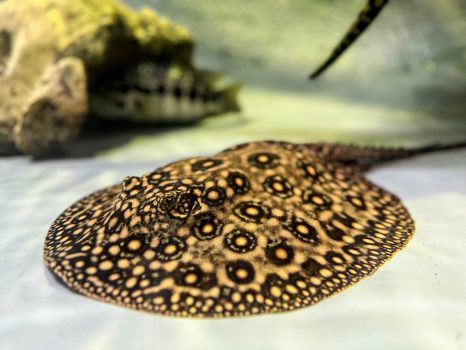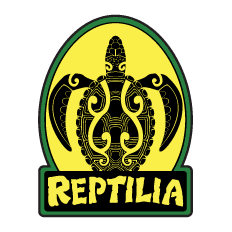Pearl Stingray
Common Name: Pearl Stingray
Scientific Name: Potamotrygon jabuti
Names: N/A
Locations: London

Diet
Pearl Stingrays are carnivorous and primarily feed on small fish, crustaceans, mollusks, and other aquatic invertebrates. They use suction feeding to capture prey from the riverbed.
Average lifespan
In the wild, Pearl Stingrays typically live around 15 to 20 years.
Size
Adults generally have a disc width of approximately 30 to 40 centimeters (12 to 16 inches).
Weight
Adult Pearl Stingrays usually weigh around 2 to 3 kilograms (4.4 to 6.6 pounds).
About
The Pearl Stingray is a freshwater stingray native to South America, particularly inhabiting river systems such as the Paraná and Paraguay basins. It prefers slow-moving, muddy-bottomed waters where its mottled, pearly skin pattern serves as excellent camouflage against the dappled light filtering through the water.
Size and behavior
As benthic ambush predators, Pearl Stingrays spend much of their time resting on or partially buried in the riverbed. They are mostly nocturnal, becoming more active at dusk to forage for food. Their movements are graceful and deliberate, using large, wing-like pectoral fins to glide smoothly over the substrate.
Diet and nutrition
In their natural habitat, Pearl Stingrays feed on a variety of benthic organisms. Their diet of fish, crustaceans, and mollusks provides them with a rich source of protein and essential nutrients. Their robust jaw structures help them crush the hard shells of prey, ensuring efficient digestion and nutrient absorption.
Conservation status
The Pearl Stingray is generally considered to be of Least Concern, though it may face localized threats from habitat degradation, water pollution, and changes in river systems due to damming and other human activities.
Fun fact
Pearl Stingrays possess an electrosensory system that allows them to detect the faint electrical signals produced by the muscle contractions of their prey, enabling them to hunt effectively even in murky, low-visibility waters.
Call or visit your local Reptilia Facility to learn how you can adopt one of these amazing reptiles.








